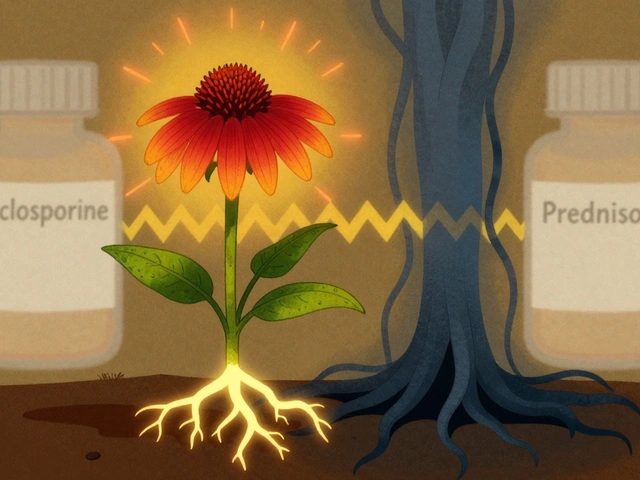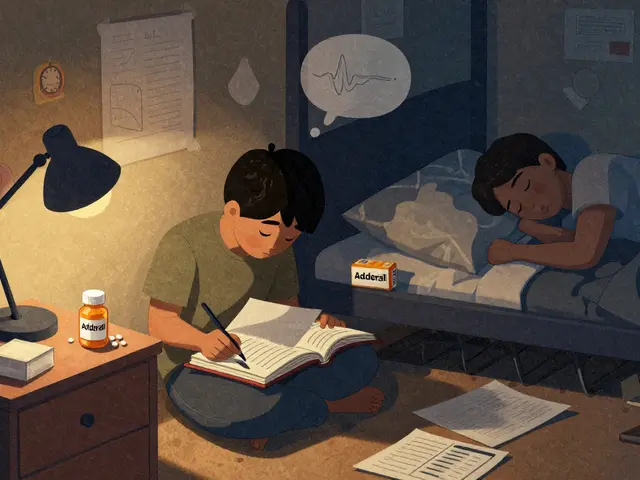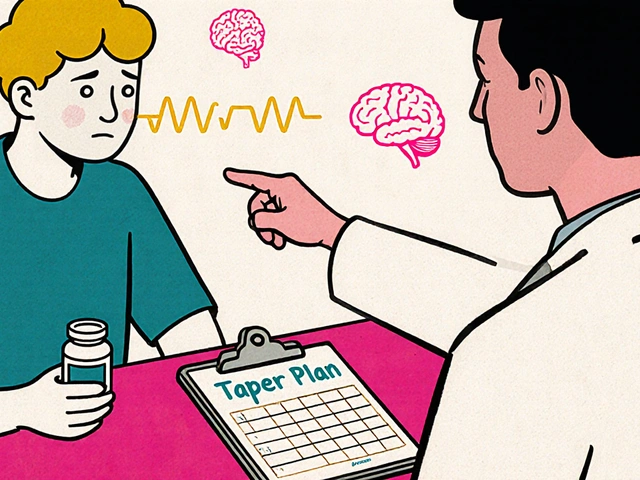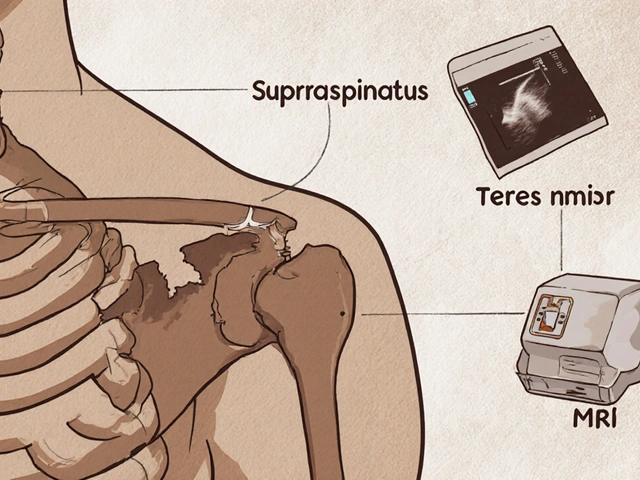Abortion Stigma Impact Calculator
This interactive calculator shows how stigma impacts abortion access and health outcomes. Enter your location's stigma level to see potential effects on care timing, mental health, and complications.
When a woman discovers she’s pregnant and doesn’t want to continue, the decision is already heavy. Add the weight of abortion as a medical option and the pressure can feel crushing. That pressure isn’t just personal-society piles on it with judgment, shame, and misinformation. The result? Women hide, delay care, and suffer unnecessarily. Let’s unpack why tearing down that wall of abortion stigma isn’t just nice‑to‑have, it’s essential for health, dignity, and equality.
Quick Takeaways
- Stigma drives delayed care, increasing health risks.
- Mental‑health outcomes improve dramatically when women feel supported.
- Legal protections matter, but cultural acceptance speeds up access.
- Community‑based education cuts misinformation in half.
- Small policy shifts can create a ripple of empowerment.
Why Stigma Isn’t Just a Feeling, It’s a Barrier
Stigma, in the sociological sense, is the set of negative beliefs that label a behavior as unacceptable. In our case, Stigma against abortion often starts in families, spreads through media, and settles into law. When a woman hears that she’s “killing a life” or “being immoral,” she may avoid seeking help for fear of being ostracized.
Research from the American Journal of Public Health shows that women who perceive high community stigma are 30% more likely to postpone an abortion until the second trimester, when complications rise. The delay isn’t a “personal choice”-it’s a direct outcome of a hostile environment.
The Hidden Toll on Mental Health
Imagine carrying a secret you can’t share. That’s the reality for many facing unwanted pregnancy that they don’t feel prepared for. The mental‑health impact is measurable. A 2023 study from the University of Michigan found that women who accessed timely, non‑judgmental care reported 45% lower rates of anxiety and depression compared to those who faced judgment.
When stigma is stripped away, counseling becomes a tool for empowerment, not punishment. Support groups that talk openly about abortion experiences-without shame-show a 60% reduction in self‑reported stress levels within three months.
Barriers to Healthcare Access
Stigma translates into concrete obstacles: fewer clinics, limited insurance coverage, and intimidating staff. Healthcare access for abortion services can be as simple as a 20‑minute drive in one state and a 200‑mile journey in another.
When a woman can’t find a provider who respects her decision, she may turn to unsafe methods. The World Health Organization estimates that unsafe abortions account for 13% of all maternal deaths worldwide-most of those deaths occur where stigma blocks safe care.

Legal Frameworks: The Role of Policy in Shaping Stigma
Law and culture dance together. In states with protective Legal framework that guarantees abortion rights, public surveys show a 25% drop in perceived stigma over five years. Conversely, restrictive laws often reinforce negative narratives, making it harder for women to seek help.
But policy isn’t the only lever. When legislators pair legal rights with public‑health campaigns-like the “Your Body, Your Choice” series-people start to see abortion as a health decision, not a moral battle.
Community Support & Education: The Grassroots Engine
Bottom‑up initiatives can outpace top‑down legislation. Support groups for people who have had abortions offer safe spaces to share stories, dispel myths, and provide referrals. One Chicago‑based group reported that 80% of members felt “more confident in making future health decisions” after just six weeks of meetings.
Education matters too. Comprehensive sex education that includes information about pregnancy options reduces stigma by normalizing the conversation. Schools that introduced a unit on reproductive health in 2022 saw a 40% drop in students reporting that they felt “embarrassed” discussing abortion.
What Does Destigmatizing Look Like in Practice?
Below is a quick comparison that shows how outcomes shift when stigma is removed.
| Metric | Stigmatized Environment | Destigmatized Environment |
|---|---|---|
| Average gestational age at procedure | 12.5 weeks | 7.8 weeks |
| Reported anxiety (scale 1‑10) | 7.2 | 3.4 |
| Rate of complications | 2.3% | 0.9% |
| Public support for legal access | 38% | 71% |
Numbers speak louder than slogans. When women feel safe, they seek care earlier, experience fewer complications, and report better mental health.
Steps You Can Take Today
- Listen without judgment. Simple, sincere listening can dismantle years of shame.
- Share factual information. Direct people to reputable sources like Planned Parenthood or WHO guidelines.
- Support local clinics. Volunteering or donating helps keep doors open in stigmatized areas.
- Advocate for inclusive education. Write to school boards or legislators about comprehensive curricula.
- Amplify survivor stories. Real voices normalize the conversation and counteract myths.
Every action, no matter how small, chips away at the wall of stigma. When that wall crumbles, women reclaim agency over their bodies and futures.
Frequently Asked Questions
Does destigmatizing abortion increase the number of abortions?
No. Studies show that when women have unbiased access, they tend to plan pregnancies better and seek care earlier, which actually reduces the need for later‑term procedures.
How does stigma affect mental health specifically?
Stigma creates shame and isolation, which are key drivers of anxiety and depression. Women who felt judged reported 2‑3 times higher stress scores than those who received non‑judgmental care.
What role do laws play in changing public perception?
Legal protections send a societal signal that the procedure is a legitimate health service. Over time, this reduces moral framing and leads to higher public acceptance.
Can education truly shift attitudes?
Yes. Comprehensive sex education that includes pregnancy options demystifies the topic and lowers embarrassment scores by up to 40% among teens.
What are practical ways to support someone facing an unwanted pregnancy?
Start by listening, offer factual resources, help find a trusted clinic, and respect the person’s autonomy. Avoid moralizing language; focus on safety and well‑being.






dAISY foto
September 29, 2025 AT 20:53Yo, this post hits the heart like a thunderclap, and I’m here to shout it from the rooftops.
First off, the stigma around abortion is a giant brick wall that we’ve been told to accept, but we can tear it down brick by brick.
When a woman feels judged, it’s like a dark cloud that follows her every step, making the simple act of seeking care feel like climbing a mountain in a storm.
We have data that shows delayed care leads to higher risks, and that’s not just numbers – those are real lives, real bodies, real futures.
Imagine being forced to hide a medical decision because your neighbor might gossip, because the clinic is a secret, because the law is whispering threats.
That pressure turns a health decision into a moral battlefield, and no one should have to fight that alone.
Destigmatizing isn’t just a nice phrase, it’s a lifeline that lets women get help early, when procedures are safest and the emotional load is lighter.
The mental‑health benefits are massive – less anxiety, less depression, more empowerment.
Communities that talk openly about reproductive choice see a jump in support, and that ripple effect changes policies, funding, and even the attitudes of the next generation.
Education is the secret weapon; when schools include honest conversations about options, the shame shrinks dramatically.
And let’s real, the myth that more access equals more abortions is busted – it actually leads to better planning and fewer late‑term procedures.
Legal protection sends a message that this is healthcare, not a moral sin, and that shifts public perception faster than any billboard could.
So, what can we do? Listen without judgment, share facts, volunteer at clinics, push for inclusive sex ed, amplify survivor stories – every tiny action chips away at the wall.
When the wall crumbles, women reclaim agency over their bodies and futures, and society becomes healthier overall.
Let’s keep the conversation loud, keep the facts straight, and keep the empathy flowing – because this is about lives, not ideology.
David Stout
September 29, 2025 AT 21:43Reading this, I feel a surge of hope because the data is crystal clear – stigma kills, and removing it saves lives.
We need to keep the conversation grounded in empathy, not judgment, and make sure resources are available wherever a woman lives.
Every community can set up trusted counseling spots, and every friend can be a listening ear.
When we normalize talking about reproductive choices, the fear evaporates.
Let’s keep pushing for policies that protect access and for education that demystifies the process.
Together, we can turn those scary statistics into stories of empowerment.
Pooja Arya
September 29, 2025 AT 22:33It is an outrage that in the 21st century we still hide behind antiquated moral panic to control women’s bodies.
Society loves to dress up oppression with polite language while the real damage is wrought in whispered shame.
We cannot pretend that stigma is a mere inconvenience – it is a weapon that slices through autonomy.
The statistics cited in the article are not abstract; they are the echo of silenced cries.
It is a moral imperative that we dismantle this false prudery and replace it with transparent, compassionate care.
Sam Franza
September 29, 2025 AT 23:23We should focus on creating safe spaces in clinics and ensuring staff are trained to respect privacy.
Raja Asif
September 30, 2025 AT 00:13The Western media loves to paint abortion stigma as a simple cultural issue but ignores the power dynamics imposed by foreign policies that undermine local sovereignty.
When governments import restrictive laws under the guise of “protecting morals,” they are essentially colonizing bodies.
Our people deserve the right to decide without the shadow of external moral imperialism.
It is time to reject these imposed narratives and assert our national right to reproductive freedom.
Matthew Tedder
September 30, 2025 AT 01:53The article does a solid job of laying out the evidence, and I think the key takeaway is that destigmatization benefits both physical and mental health.
From a public‑health perspective, early access reduces complications, and from a social perspective, it strengthens community trust.
Balancing legal frameworks with education seems to be the most effective route forward.
Cynthia Sanford
September 30, 2025 AT 02:43Totally love how this breaks down the numbers – it shows that when we stop judging, we actually make things safer for everybody.
Sharing these facts with friends can spark real change, and we all can pitch in to support local clinics.
Yassin Hammachi
September 30, 2025 AT 03:33One could argue that stigma acts as an invisible barrier, shaping choices long before any law is written.
By illuminating the data, we invite a rational discourse that transcends moral panic and invites collective responsibility.
Michael Wall
September 30, 2025 AT 04:40Stigma is a heavy word but it really just means people think badly about something.
When that thinking is negative it stops women from getting help early.
Irene Harty
September 30, 2025 AT 05:30It must be noted, within the broader context of systemic control, that the persistent portrayal of abortion as a moral quandary serves to divert public attention from the covert orchestration of reproductive governance by vested interests.
Such narratives are engineered to sustain a climate of fear, thereby ensuring compliance with hidden agendas.
Jason Lancer
September 30, 2025 AT 06:36Sure, the stats are there, but honestly this whole “destigmatize” spiel feels like another buzzword campaign that will fade once the next headline pops up.
Brooks Gregoria
September 30, 2025 AT 07:26While the article praises destigmatization, one could argue that focus on stigma distracts from the more pressing issue of access logistics, such as clinic distribution and funding shortages.
If we keep talking about feelings, we’ll never fix the real infrastructure problems.
Sumit(Sirin) Vadaviya
September 30, 2025 AT 10:13From a formal perspective, the presented data aligns with World Health Organization findings, confirming that reduced stigma correlates with lower complication rates.
It is encouraging to see such evidence-based advocacy, and I hope it inspires further policy development. 😊
Theo Roussel
September 30, 2025 AT 11:03Methodologically, the article leverages cross‑sectional epidemiological cohorts to elucidate the inverse relationship between sociocultural stigma indices and procedural latency metrics.
Such a granular analytic approach substantiates the call for integrative public health interventions.
Erick Masese
September 30, 2025 AT 11:53The discourse presented herein exemplifies a paradigm shift from moralistic polemics to empirically grounded praxis, thereby enhancing the epistemic foundation upon which reproductive rights advocacy rests.
Matthew Charlton
September 30, 2025 AT 13:00This piece really shines a light on how compassion and data can work hand‑in‑hand to create real change.
It’s a reminder that each of us can play a part-whether by sharing reliable information, supporting local clinics, or simply listening without judgment.
Pamela may
September 30, 2025 AT 13:50I cant stress enough how crucial it is to stop beating around the bush and start takin real action.
The numbers dont lie and the stories that come from women who have been forced into silence are heartbreaking.
We need to flood our communities with resources, we need to fund clinics, we need to educate schools, we need to push lawmakers to scrap punitive laws.
Every day we wait is another day a woman suffers, and that is unacceptable.
If we keep talking about "just talk more" without backing it up with concrete steps, we are just making empty noise.
Lets get our hands dirty, volunteer, donate, spread facts, and make sure no one has to hide their health decisions ever again.
tierra hopkins
September 30, 2025 AT 14:40Every small act-like sharing a trusted clinic’s number or standing up for comprehensive sex ed-adds up to big change.
Ryan Walsh
September 30, 2025 AT 15:46We all can help by listening and sharing facts.